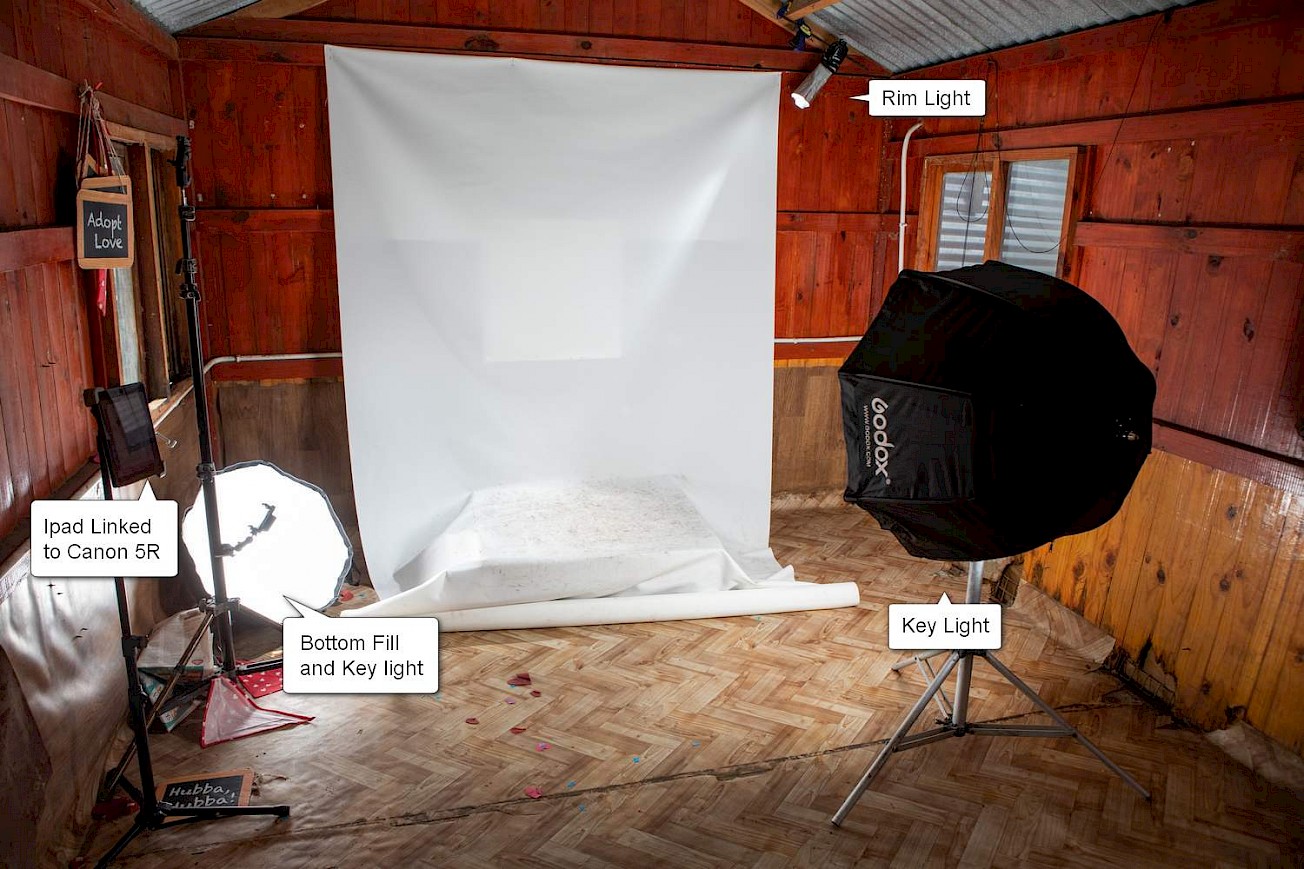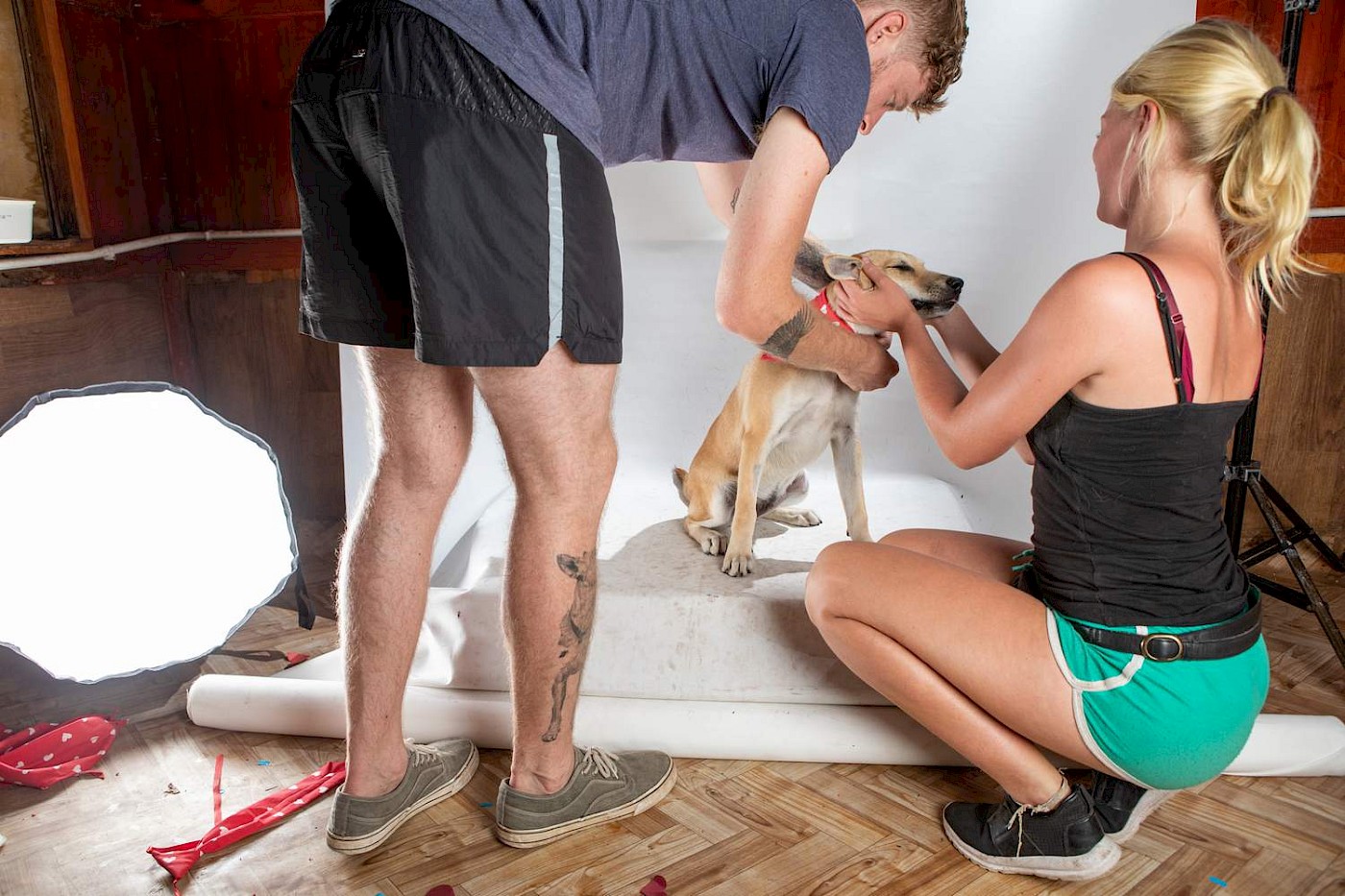I love helping with a good cause, I often shoot for TEARS, one of the country’s leading animal welfare organisations based in Cape Town.
Their work with animals is incredible, and you can find out more here. --About TEARS--
Today I'm sharing some behind the scenes pets shoot photography tips. I learned a lot while on the set of the Valentines promo shoot at TEARS earlier this year. For me, it was a fresh experience. Sure, I've worked with animals here and there, but not at this level. This was new territory all together. I'm used to working with people who I can direct and guide to get the shot, animals don't really care what I have to say. But this is what I learned, and I thought I'd share my experience as a guide.
- Your own pets or a big shoot.
- A closed space is better.
- Studio lighting, if you have it.
- Tasty treats.
- 2-3 assistants.
- Put your gear out of leg lifting reach.
- Secure gear and valuables.
- Know when to call it.
- Lighting and setup explained.
Just your own pets or a big fancy shoot.
Whether you are a professional photographer or using your smartphone with your own pets, at least one or two of these tips could help you; Especially the assistants part.
A closed space is better.
For a lot of animals a closed space (studio area) works better, you need to 'production-line' the pooches to keep the flow going. By keeping them in that closed space, they can't bolt off or get distracted by other things they can see. Remove or secure anything they can knock over. Keep it as uncluttered and non-distracting as you can.
Studio lighting preferable.
This makes it easier because external factors such as clouds or harsh shadows created by the sun won't limit you. It means, once you have your settings in, you can move through the various pooches quickly. It also means consistent photos. Studio lighting is not to be confused with indoor lighting. Most of the time, indoor lighting will give you blurred photos. If you're getting that, take it outside into a shady area.
You need treats, all kinds.
Luke had polony chopped up into small cubes. He also had a few other options, like liver biltong for emergencies. Most of the dogs went nuts for polony. There were a few that had no interest at all. I found that interesting. Catnip, we shot with one cat, for that we had catnip. True to cat-nature, it was still a challenge.
2 to three assistants.
Preferably 3, Two people working with you in the shooting area and one other person lining up the dogs. Now here's the kicker. The key person, in this case Luke, needs to know when to get out of the way so you can get the shot. So if you do this with someone who hasn't done it before, explain to them how you will shoot. Luke used treats to get our subject to 'pose'. Luke knew when I might have a good pose and quickly removed his hands out of shot. This made all the difference. His assistant was there to stop the pooch bolting off when something shiny attracted its attention. This allowed Luke to concentrate on getting our subject to pose. Our third assistant had the dogs lined up, improving the flow tremendously.
Put your gear out of leg-lifting reach.
Some male dogs walk in like they own the place, that back leg is locked-and-loaded at all times. Leave nothing on the floor of value. I had my camera bag on the floor for a brief period; I realised what a bad idea that was and moved it. Just in case, have a few cloths and a mop ready.
Secure gear and valuables.
Make sure those secure areas sturdy, preferably high up. Fun fact, I had one dog jump up on a table at a previous shoot. His paw hooked the strap of my very expensive camera and nearly pulled it off the table. Luckily, my assistant was sharp and caught it. A near disaster averted. Phew.
Know when to call it.
Read the animal you are working with, you have a brief window. You'll know when it's a lost cause, no matter how long you shoot, you'll never get the shot. Move on.
My lighting and setup explained.
We used a roll of material as a backdrop. It got dirty but was better than nothing. A sheet would also work well. This really helped with keeping the pooches isolated, showing their personalities beautifully.
- Rim Light: I used one rim light, top right-hand corner. This separated the doggie from the white background. This light was also 'snooted' so it wouldn't bleed on to the backdrop, burning it out.
- Key light: Called the key because it's the one light source you can't do without for the shoot.
- Fill light: To fill shadows from the bottom, having used this setup before I knew it would work well as a bottom-rim-light as too.
- Photoshop: Final edits done in Capture One Pro and Photoshop. I realised later that the new 'select subject' feature in Photoshop worked well and allowed for a speedy workflow.
- Strobes: My lighting kit is all Godox, remote controlled and battery operated. I need not reach for a power cable. It's compact to pack away, powerful and quick to set up.
- Camera: For this shoot I used the Canon R5 mirrorless camera, I also linked it to my iPad which was handy to review the shots as we took them.

If you would like to know more about the incredible work TEARS does, please visit this link.
